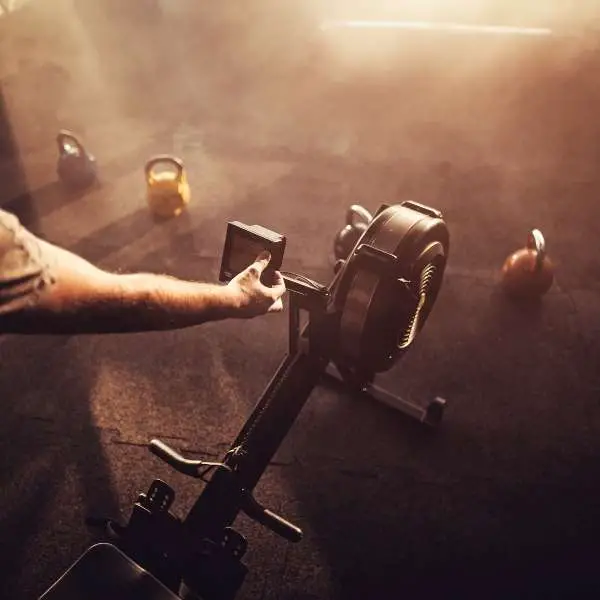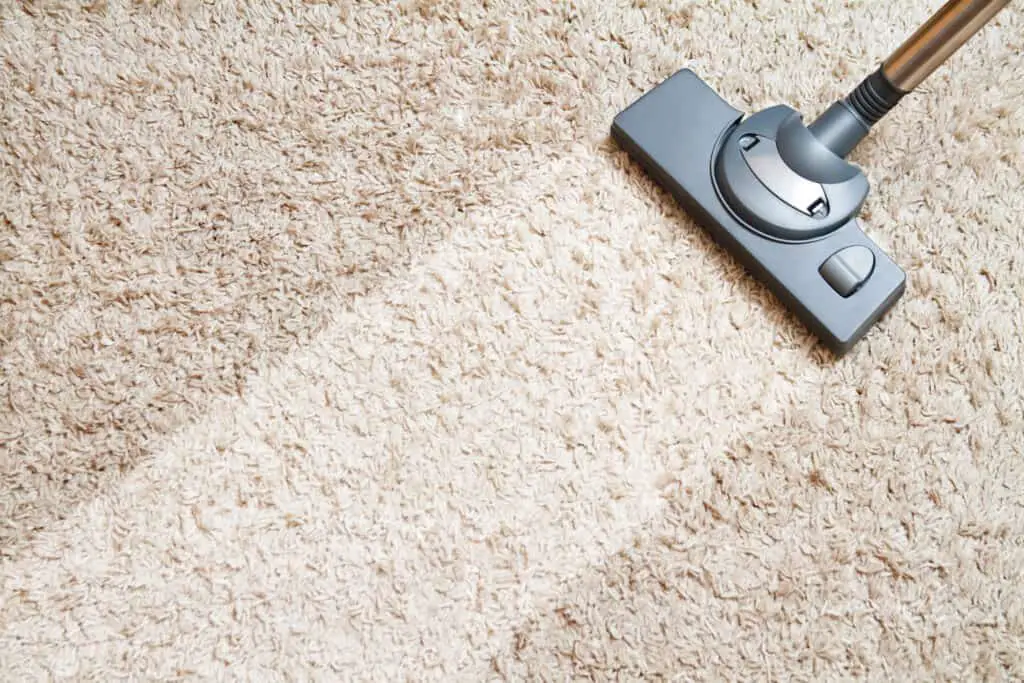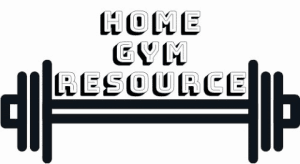Do you only have a carpeted area to place your indoor rowing machine? Is that a good idea or will you run into problems? While carpet may seem like a convenient option, there are some drawbacks that might leave you reconsidering. But fear not! We’ve got solutions that will keep both your rower and carpet in great shape.
While placing an indoor rower on carpet is not immediately problematic, it can cause some issues in the long term. The carpet can dent and wear because of weight and friction while carpet absorbing sweat is cause for serious hygiene concerns. Increased dust and fibers can also affect rower lifespan.
While that all sounds a bit dramatic, these aren’t issues that should be overlooked if you care about your carpet, rower or health. Luckily there are some things you can do that quickly solve all these issues. Let’s go through all the pros and cons of placing a rower on carpet, what the fix is and how to do it right.
Contents
Pros And Cons Of Putting an Indoor Rowing Machine On Carpet
If the only place you can put your rower has carpet, you might be wondering if it’s the right decision to put it there. Putting an indoor rower on carpet has some pros and cons. Let’s go over why carpet is good and why it isn’t to put your rower on. Read more about using carpet as gym flooring here.
| Pros of Putting an Indoor Rowing Machine on Carpet | Cons of Putting an Indoor Rowing Machine on Carpet |
|---|---|
| – Provides good grip for the rower | – Rower can wear out the carpet |
| -Save money and effort | – Carpet releases dust and fibers reducing rower lifespan and function |
| – Reduces noise compared to a hard floor but not compared to a good mat. | – Sweat is difficult to clean from the carpet |
Pros:
- Provides good grip for the rower: Carpeted surfaces offer traction and grip, allowing the rowing machine to stay firmly in place during intense workouts. This stability enhances safety and prevents the machine from sliding or shifting.
- Save money and effort: The carpet is already in place and by not removing it or placing a mat on top you save yourself some money and/or time.
- Reduces noise: Carpeted floors help dampen noise produced by the rowing machine. The fibers and padding of the carpet absorb vibrations and minimize the impact sound, creating a quieter environment for both yourself and others in your household. Carpet isn’t that good at reducing noise transfer to other rooms though.
Cons:
- Rower can wear out the carpet: The continuous back-and-forth motion of the rowing machine, particularly if used frequently, can cause abrasion damage to the carpet over time. The constant rubbing of the machine’s feet against the carpet fibers may lead to visible wear and tear.
- Carpet releases dust and fibers: Carpets tend to release dust and fibers, which can accumulate in the rowing machine’s moving parts. The presence of dust and fibers can accelerate the wear and tear of the machine and require more frequent cleaning and maintenance.
- Sweat is difficult to clean from the carpet: Rowing workouts can make you sweat, and if you exercise vigorously, sweat may end up on the carpet. Absorbent carpets can soak up the sweat, making it challenging to clean thoroughly. This can result in unpleasant odors and hygiene concerns over time.
Why You Shouldn’t Place a Rowing Machine Directly On Carpet

When considering whether to place an indoor rowing machine on carpet, it’s essential to weigh the pros and cons. While there are a few advantages, in my opinion, the drawbacks outweigh the benefits. Let’s delve into the cons in more detail:
- Carpet Damage: Over time, the friction caused by the rower’s feet can lead to abrasion damage on the carpet.
- While it may not occur immediately, regular use can result in noticeable damage within a year. Replacing the carpet can be costly, but this can be easily prevented.
- However, if your carpet is already due for replacement or aesthetics aren’t a concern, this may not be an issue.
- Impact on Machine Lifespan: Carpets tend to release fibers and dust, which can accumulate if not cleaned properly.
- During rowing sessions, the dust and dirt can agitate and enter the air, affecting the moving parts of the rowing machine, reducing the smoothness of the rower.
- Dust and dirt can accelerate wear and tear on the machine, necessitating increased cleaning and lubrication frequency.
- Hygiene Concerns: Rowing is a workout that induces sweating, and while most of it may be absorbed by your workout clothes, some drops may end up on the carpet.
- Carpets are absorbent and can easily soak up sweat, leading to hygiene problems. Unfortunately, carpets are more challenging to clean compared to other flooring options.
Suggested: Rowing machine maintenance guide
These hygiene issues should not be overlooked. Sweat contains more than just water, and the residue left behind can deteriorate the carpet, create unpleasant odors, and pose potential hygiene risks. While maintaining your rowing machine is important, experiencing health problems as a result of your efforts to stay healthy is counterproductive.
Considering the cons mentioned above, the benefits of placing your rowing machine on carpet may not outweigh the potential drawbacks. If you’re limited to carpeted spaces for your rowing machine, there are some things you can do.
Suggested: Recommended home gym rowing machine

Suggested: Is 30 minutes on a rowing machine enough to see results?
Safely Placing a Rower on Carpet: Solutions and Benefits
When it comes to placing your rowing machine on carpet, there are several effective strategies to overcome the associated challenges. Let’s explore the options and their benefits:
- Remove the Carpet: Removing the carpet and utilizing the underlying concrete floor is a viable solution. Concrete floors are easier to clean, don’t absorb sweat, and don’t wear out like carpets.
- However, this option is feasible only if you can remove the carpet without damaging it, allowing for potential reinstallation in the future.
- Concrete floors often allow the rower to rock and move around too much so you’ll still need the some kind of gym mat under the rower.
- Install Gym Flooring: Transforming the space into a dedicated home gym by installing gym flooring is a comprehensive solution.
- While it involves an initial investment, it offers numerous advantages, such as improved aesthetics and easier integration of additional equipment as your fitness needs evolve.
Suggested: Everything you need to know about home gym flooring
- Use an Equipment Mat: If keeping the carpet in place is preferred and you don’t plan to expand your home gym setup, using an equipment mat is a convenient solution.
- An equipment mat effectively mitigates the drawbacks of placing your rower on carpet. These mats, typically made of rubber, PVC, or vinyl, offer a simple yet effective layer of protection.
If you plan on getting more gym equipment later on, picking a spot to build your home gym and just biting the bullet and getting gym flooring for that whole area is the best.
If you just intend on only using the rower, getting an equipment mat is the cheapest option and on that is really effective in solving all the problems outlined above.
In general, rubber mats are a bit more expensive but look better and are better at noise damping. For negating the cons of putting your rower on carpet, a vinyl/PVC mat will be perfectly fine. Rubber equipment mats are the same material as high quality gym flooring so you’re basically getting a mini home gym floor.
Equipment mats last long, are easy to move with your equipment, are affordable, and offer the solution to the problem of carpet wearing out and getting dirty while also protecting your rower. An equipment mat can also help a lot if your rower is moving around while using it.
Check out this high-quality yet affordable mat from Supermats. It’s the right size for most of the popular indoor rowers. It does everything it has to do while not costing too much.
Benefits of an Equipment Mat
There are some pretty good benefits placing a rower on a mat can provide.
Certainly! Here’s the text presented in a chart format:
| Benefit | Description |
|---|---|
| Superior Grip | An equipment mat provides excellent grip, keeping your rower securely in place during workouts. |
| Easy to Clean | The mat’s surface is easy to clean, preventing the accumulation of dust and dirt on your machine. |
| Abrasion Resistance | Durable construction resists wear and tear, ensuring long-lasting performance of the mat. |
| Noise Reduction | Rubber mats offer optimal noise damping, minimizing disturbances during rowing sessions. |
| Cost-Effective | These mats are affordable compared to the cost of a new rowing machine or carpeting. |
| – Protects two significant investments with a small, long-term investment in a mat. |
- Superior Grip: An equipment mat provides excellent grip, ensuring your rower stays securely in place during workouts.
- Easy to Clean: The surface of an equipment mat is easy to clean, preventing the accumulation of dust and dirt that could affect your rowing machine.
- Abrasion Resistance: The mat’s durable construction resists wear and tear, ensuring long-lasting performance.
- Noise Reduction: Equipment mats made of rubber offer optimal noise damping, minimizing disturbances during rowing sessions.
- Cost-Effective: Compared to the cost of a new rowing machine or new carpeting, these mats are very affordable. A small investment can protect two much bigger investments for a long time.
Equipment mats are a long-lasting investment that can be easily relocated along with your rowing machine. Their affordability, durability, and ability to protect both your rower and the carpet make them an ideal solution. Additionally, if your rower tends to move during intense workouts, an equipment mat can provide added stability and security.
Choosing the Right Mat for Your Rowing Machine
When selecting a mat for your rowing machine, it’s essential to consider a few factors that will ensure the best performance and protection. Here are some key considerations:
1. Material
Opt for high-quality mats made from rubber, PVC, or vinyl materials. These options offer durability, excellent grip, and noise-absorbing properties. Rubber mats are particularly renowned for their durability and superior noise-reduction capabilities, making them an excellent choice for reducing workout disturbances.
2. Size
Ensure that the mat is large enough to accommodate the dimensions of your rowing machine. It should be wide and long enough to support the base of the machine fully. This ensures stability during intense rowing sessions and provides adequate protection for the surrounding carpeted area.
Additionally, having some extra space around the machine allows for easy movement and access after a workout.
3. Thickness
Consider the thickness of the mat to provide cushioning and stability. Generally, a thickness of 1/4 to 1/2 inch is recommended for effective noise reduction and floor protection.
Thicker mats offer added firmness and stability, which can be particularly beneficial if your carpet is soft or squishy.
4. Non-Slip Properties
Look for mats that offer a non-slip surface to prevent the rowing machine from shifting during intense workouts. A non-slip surface enhances safety and stability, allowing you to focus on your exercise routine without interruptions.
Rubber mats tend to offer better grip, although PVC and vinyl mats also provide sufficient traction.
5. Easy Maintenance
Choose a mat that is easy to clean and maintain. Look for mats with smooth surfaces that can be wiped down effortlessly, ensuring hygiene and longevity.
Both rubber and PVC mats are known for their ease of cleaning. Regular cleaning of the mat prevents the accumulation of sweat, dust, and dirt, maintaining a clean and hygienic workout environment.
By considering these factors, you can select the perfect mat that complements your rowing machine and provides optimal performance, floor protection, and noise reduction.
Take your rowing experience to the next level with a well-chosen mat that offers grip, stability, and durability. Explore our range of recommended mats to find the perfect match for your rowing machine and home gym setup.
| Factor | Consideration |
|---|---|
| Material | Opt for high-quality mats made from rubber, PVC, or vinyl materials. |
| – Rubber: Durable, excellent grip, superior noise reduction capabilities. | |
| – PVC and Vinyl: Durable, good grip. | |
| Size | Ensure the mat is large enough to accommodate the dimensions of your rowing machine. |
| – Provides stability and protection for surrounding carpeted area. | |
| – Allows for easy movement and access after a workout. | |
| Thickness | Consider 1/4 to 1/2 inch thickness for effective noise reduction and floor protection. |
| – Thicker mats provide added firmness and stability, suitable for soft or squishy carpets. Thinner mats (3/16″+) are fine for harder carpets. | |
| Non-Slip | Look for mats with a non-slip surface to prevent the rowing machine from shifting during workouts. |
| – Rubber mats offer better grip; PVC and vinyl mats provide sufficient traction. | |
| Easy Maintenance | Choose mats with smooth surfaces that are easy to clean and maintain. |
| – Regular cleaning prevents the accumulation of sweat, dust, and dirt for a hygienic workout environment. |
Recommended Rowing Machine Mats
Many generic equipment mats are too short for popular rowing machines. While they satisfy the other conditions you can see above, this is often an issue.
Most rowing machines are about 2′ wide which fits fine on most standard equipment mats. However, the length can be 85″ for a Waterrower and as much as 95″ for a Concept2 rowing machine. Many mats for treadmills and other equipment are shorter than that.
Luckily there are a few good rowing machine mats out there that fit most rowing machines perfectly.

